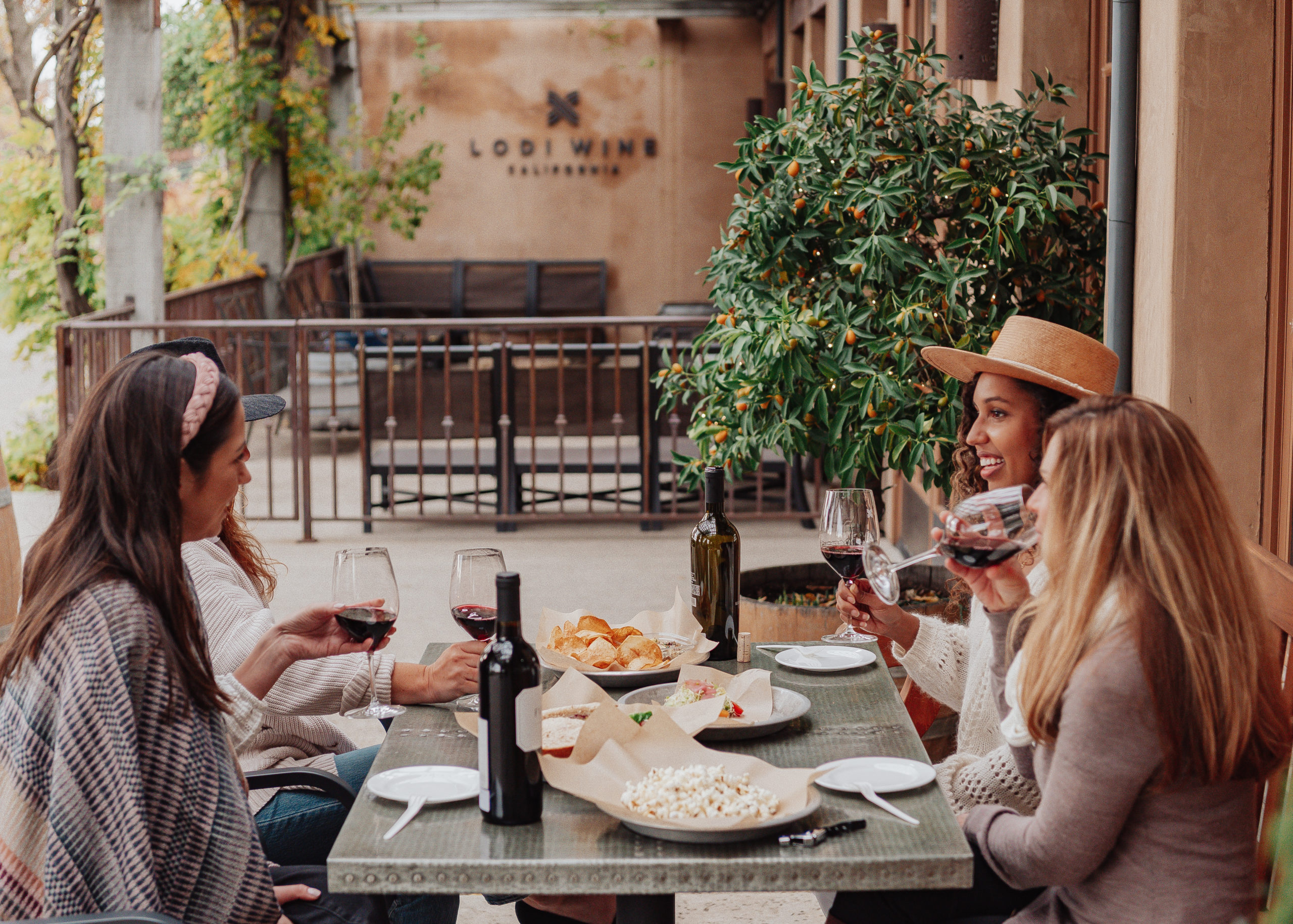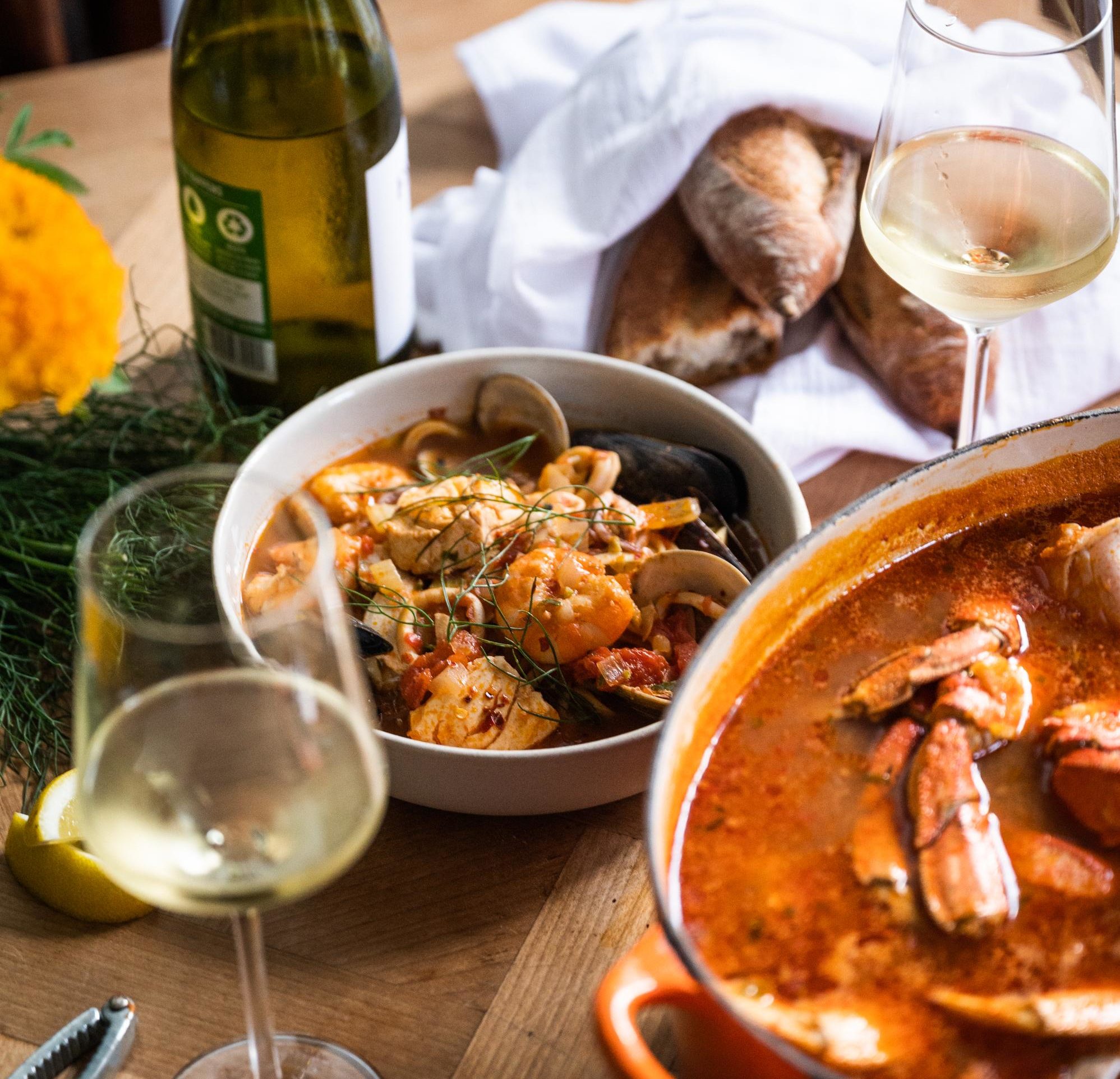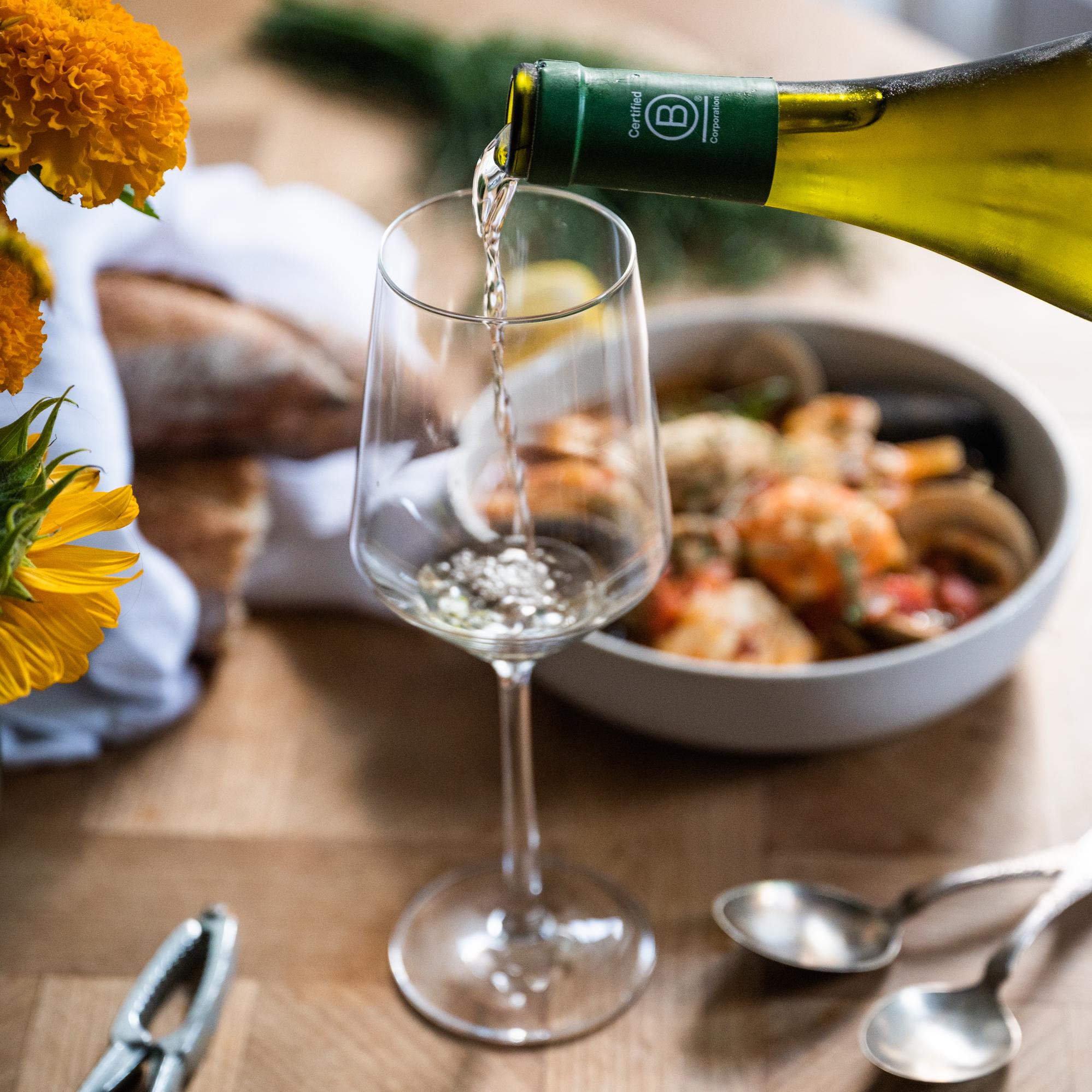Wow Your Holiday Guests with Delicious Pasta with Seafood
It's time for holiday-worthy cioppino pasta, sustainable seafood and wine.

It's time for holiday-worthy cioppino pasta, sustainable seafood and wine.

You’ve probably already made steps to eat (and drink) more sustainably – like choosing California-grown produce and wines when you shop and dine out. But how much consideration have you given to the seafood you’re eating? Thankfully, with 840 miles of gorgeous coastline, California is no slouch when it comes to both amazing scenery and sustainable seafood. The recipe for Cioppino Pasta shared below highlights some of the best seafood the Golden State has to offer. Not surprisingly, this pasta with seafood is also a perfect way to impress your holiday guests.

Americans are eating more seafood than ever before (about 19 pounds per person each year). That said, it’s still less than the USDA recommendation of two four-ounce servings a week. If you’re like a lot of people who want to eat more seafood but are concerned about overfishing and other environmental impacts, you’ll be happy to know that like farming, California is at the forefront of sustainability with fishing practices.
When it comes to seafood, the Monterey Bay Aquarium’s Seafood Watch reigns supreme. As in the wine industry, sustainability encompasses a lot of different factors such as preserving the environment, protecting workers and ensuring that folks in the entire seafood supply chain actually make a buck or two.
Thankfully it’s easy to find sustainable seafood in the Golden State. A great place to start is by using Seafood Watch’s website for recommendations on which seafood gets a big thumbs up and which is a no-go. Its team makes science-based recommendations on which seafood is the most sustainable. They break it down into four easy-to-understand categories: Best Choice (buy first), Certified (equivalent to a Seafood Watch Good Alternative or better), Good Alternative (yellow light – there may be concerns with how its caught, farmed or managed) and Avoid (overfished or caught in a way that harms the environment). And yes, there’s an app for that. Add it to your phone so you have easy access to the list whether you’re ordering in a restaurant or buying seafood at a market near you.
Beyond that, you already know the drill – the best way you can support California fishing families is to buy local. There are several websites that can help you find sustainable seafood near you including LocalCatch and Get Hooked Seafood. In addition, many communities have markets and farmers’ markets that feature locally caught fish and seafood. Don’t be afraid to ask questions and make special requests, especially if you’re shopping in your local supermarket. Pro tip – if seafood’s the star of your holiday show, order ahead so you don’t have to scramble for a new recipe when that Dungeness crab (or oysters or halibut) is sold out.

Giving holiday gifts that don’t end up in a landfill and that also support California farmers, winemakers and fishermen and women is something we can all get behind! Did you know that over 90% of California farms are family owned – and many of those are multigenerational? That’s true for winemakers and fishermen as well. This holiday season, consider ways to support your farming, winemaking and fishing neighbors by choosing sustainable gifts for your family and friends. Here are a few of our top ideas:
Cioppino is a fish stew that became popular in the San Francisco Bay Area in the 1930s. Its origin is suspected to stem from when Italian-American fishermen added something from the day’s catch to a large, communal soup kettle on the dock. Though it seems to be related to a few other fish stew recipes from Italy, the name “cioppino” remains a bit of a mystery, but some historians have suggested that it’s Italian-American slang for “chip in.” However the dish got its name, there is one thing you can definitely call it – delicious. The recipe is very versatile – swap whatever fish or shellfish to ensure you always have the freshest catch available. As a general rule of thumb, shellfish is one of the most sustainable types of seafood! Pair this cioppino with California Chardonnay or California Dolcetto.
Cioppino was developed in the late 1800s by fishermen in the North Beach area of San Francisco. If a fisherman came back from a day at sea without any fish, he would walk down the port with a pot asking his fellow fisherman to “chip in” some of their haul. The most common way to cook up the resulting assortment of seafood was to a tomato-based stew - now known as Cioppino. Even today, the type of seafood used in Cioppino often varies but it always features a tomato-based broth and spicy peppers - with lots of locally grown garlic and wine. California Chardonnay or California Dolcetto are perfect pairings for this iconic California dish.


Though many wine lovers now subscribe to the “drink what you like, eat what you like” philosophy, white wine is still overwhelmingly paired with seafood. Why? Just like you may like squirting a bit of lemon juice on your fish, the acidity in white wine helps to brighten the flavors of many seafood dishes, especially buttery and creamy ones. That said, bold, tomato-based seafood dishes like cioppino can also work well with reds. Here, we give you a pairing recommendation for one of each; California Chardonnay and California Dolcetto.
Chardonnay is a classic seafood pairing and can play well with bigger flavors, especially if you choose one that is crisp, clean, acidic and fermented in stainless. Dolcetto is an easy-drinking red often enjoyed on the young side like Beaujolais. Though its name translates to “little sweet one,” it’s kind of a misnomer. Rather, Dolcetto can be juicy, earthy and slightly tannic and it holds up well to the tomato-based cioppino.
